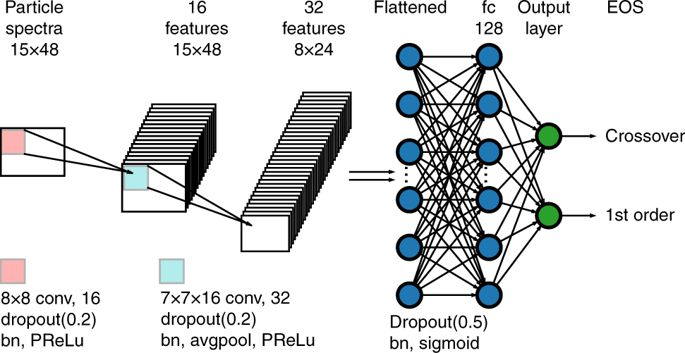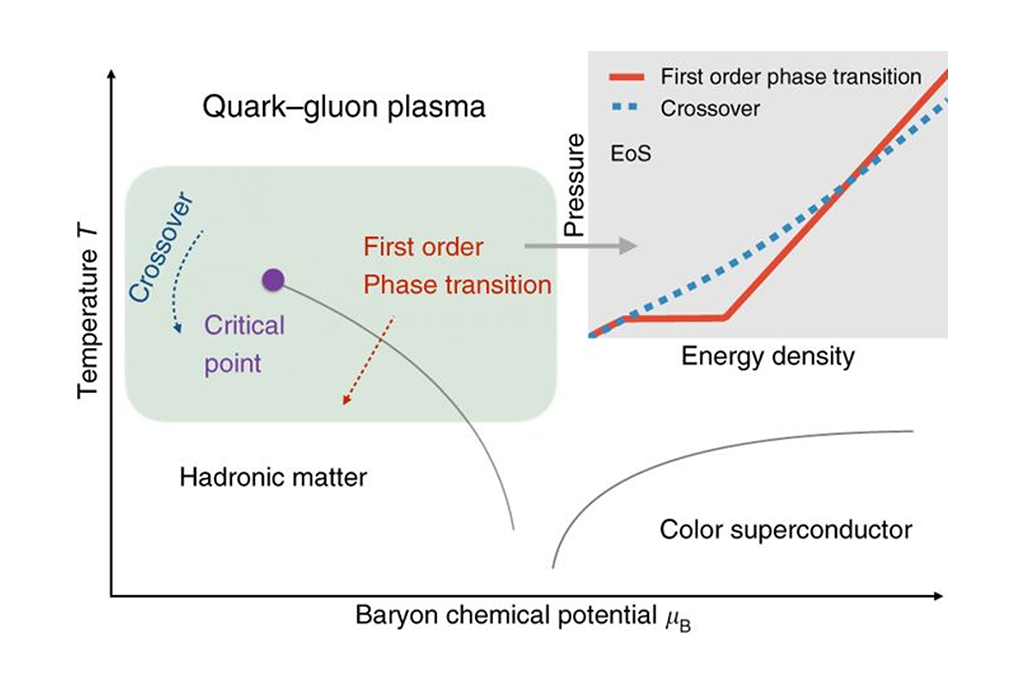LG Pang, K. Zhou, N. Su, H Petersen, H. Stocker &X.-N. Wang, An equation-of-state-meter of quantum chromodynamics transition from deep learning, Nature Communications 9, 210 (2018)
The researchers programmed powerful arrays known as neural networks to serve as a sort of hivelike digital brain in analyzing and interpreting the images of the simulated particle debris left over from the collisions. During this test run the researchers found that the neural networks had up to a 95 percent success rate in recognizing important features in a sampling of about 18,000 images.
The next step will be to apply the same machine learning process to actual experimental data. Powerful machine learning algorithms allow these networks to improve in their analysis as they process more images. The underlying technology is used in facial recognition and other types of image-based object recognition applications. The images used in this study – relevant to particle-collider nuclear physics experiments at Brookhaven National Laboratory’s Relativistic Heavy Ion Collider and CERN’s Large Hadron Collider – recreate the conditions of a subatomic particle “soup,” which is a superhot fluid state known as the quark-gluon plasma believed to exist just millionths of a second after the birth of the universe.
 Figure: The convolution neural network architecture. The architecture is designed to identify the quantum chromodynamics transition by using particle spectra with 15 transverse momentum pT bins and 48 azimuthal angle ϕ bins
Figure: The convolution neural network architecture. The architecture is designed to identify the quantum chromodynamics transition by using particle spectra with 15 transverse momentum pT bins and 48 azimuthal angle ϕ bins
Top 50 Nature Communications physics articles published in 2018
